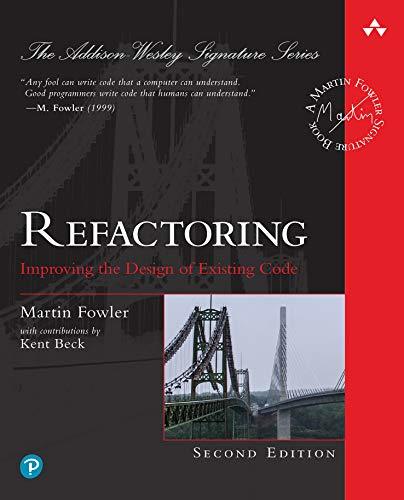What do you think?
Rate this book


Besides an introduction to refactoring, this handbook provides a catalog of dozens of tips for improving code. The best thing about Refactoring is its remarkably clear presentation, along with excellent nuts-and-bolts advice, from object expert Martin Fowler. The author is also an authority on software patterns and UML, and this experience helps make this a better book, one that should be immediately accessible to any intermediate or advanced object-oriented developer. (Just like patterns, each refactoring tip is presented with a simple name, a "motivation," and examples using Java and UML.)
Early chapters stress the importance of testing in successful refactoring. (When you improve code, you have to test to verify that it still works.) After the discussion on how to detect the "smell" of bad code, readers get to the heart of the book, its catalog of over 70 "refactorings"--tips for better and simpler class design. Each tip is illustrated with "before" and "after" code, along with an explanation. Later chapters provide a quick look at refactoring research.
Like software patterns, refactoring may be an idea whose time has come. This groundbreaking title will surely help bring refactoring to the programming mainstream. With its clear advice on a hot new topic, Refactoring is sure to be essential reading for anyone who writes or maintains object-oriented software. --Richard Dragan
Topics Covered: Refactoring, improving software code, redesign, design tips, patterns, unit testing, refactoring research, and tools.
432 pages, Kindle Edition
First published January 1, 1999